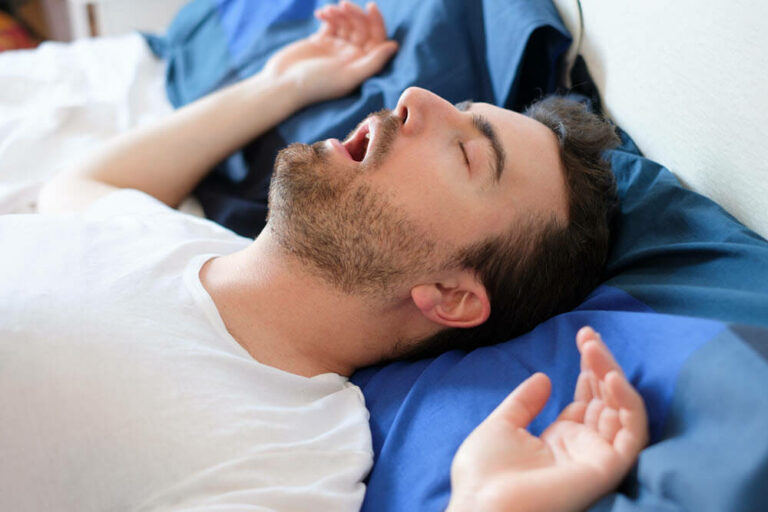For some of you, falling asleep is quite a tough job. Unfortunately, many medical conditions such as sleep disorders prevent you from getting some much-needed shuteye. There are also other conditions that may arise if you don’t get enough sleep, which can worsen the situation.
Every night before you go to bed, you turn off the lights, close your eyes, and you hope that you’ll have a good night’s sleep. Unfortunately, sometimes that doesn’t turn out as you’ve planned, so you end up sleep-deprived, and the next day, you aren’t capable of doing your daily chores. But, what if we suggest you do something a little bit different this time around and keep some lights on instead?
Changing something as simple as choosing the best nightlight color can sound a little bit trivial, but little tweaks can make a world of difference. Read this article and you’ll find out how light affects your sleep quality and what’s the best light for inducing sleepiness and restful sleep.
How Can Light Affect Your Sleep?
Light plays a main role in your ability to fall and stay asleep throughout the night. However, when it comes to sleep, various light wavelengths have different effects on the ability to sleep. This is due to the fact that evolution has connected the human body to respond to the complete light spectrum that the sun provides in different ways.
Basically, it goes like this: when light reaches your eyes, it’s recognized by the photoreceptors in your retina. These photoreceptors send a message to a part of your brain called the hypothalamus, which in fact is the regulator of your circadian clock and produces the sleep hormone also known as melatonin.
Generally, your sleep-wake cycle is based on the amount of red and blue light that you receive. Blue light wavelengths, including the ones that we can find in sunlight, are very stimulating to the photosensitive cells. On the other hand, red light wavelengths have a calming effect.
In fact, the photosensitive cells that are stimulated by blue light send a message to your brain to wake up. Regardless of the time of night or day the blue light appears, you’ll wake up since your brain is telling you to.
Long before television, light bulbs, smartphones, and other electronic devices, the sun was the only source of blue light that our ancestors had. So, after the sun had set, it set their circadian clock to sleep mode. On the other hand, today, our modern lifestyle interferes with our body’s internal clock. All of us spend a significant amount of time indoors, using artificial light during nighttime and daytime, and this has a big impact on our sleep quality.
Therefore, during the day, the sun is the best light source for your body’s internal clock. And during the night it’s essential to carefully select the colour of the light, especially if you have any type of sleep disorder.
The Benefits of Red Light For Your Sleep
Red light is the most likely to affect your sleep cycle and causes sleepiness. In fact, red light can help you feel calmer in the evening and induce melatonin production. Moreover, red light can be beneficial for your overall mental health and well-being, as well. We’ll present you a few benefits of the red light for your sleep quality:
- Natural production of melatonin, the sleep hormone. Red light helps to increase melatonin levels in comparison to other types of light such as blue or violet light.
- Prevention of sleep inertness. Light exposure to red and wavelengths close to red before you go to bed and while you’re asleep can be helpful in preventing the groggy experience that you feel when you wake up. Red light exposure can cause alertness and better concentration when you wake up.
- Relaxation of your muscles. Red light exposure promotes sleepiness. It also makes your entire body relaxed.
How to Create a Red Light Therapy Effect?
First of all, you need to know what red light therapy, also known as photobiomodulation (PBM) or lower-level laser therapy (LLLT), is.
It’s simply a non-invasive treatment that utilizes LED light bulbs to emit red light wavelengths and near-infrared lights directly to your cells and skin. This increases the functions of your cells by supplying the mitochondria with the light needed to make the energy that powers your body.
You can go to red light therapy in specialized medical institutions or you can create one at your cozy home. So, now it’s time to give you a tip on how to create a red light therapy effect. It’s quite simple. All you need to do is use red LED lights of very high quality.
You can just use red light bulbs, but be careful of the ones that are just tinted red; look for light bulbs that emit red or close to red wavelengths instead of just being red themselves.
Another thing that you can utilize is an ambient light device that can release various light colors. However, our sincere recommendation is to use a red LED light device due to the fact that it only releases red light wavelengths, and it’s the closest to red light therapy.
How Blue Light Harms Your Sleep
Human eyes aren’t efficient at blocking blue light wavelengths, and almost all of the blue light passes directly through the back of the retina.
So, as we previously said, exposure to light colors controls your circadian rhythm. Exposure to blue light interferes with your body’s ability to get ready for sleep due to the fact that blue light is known as a blocker of the sleep hormone melatonin, meaning it reduces the production of melatonin. Thus, you feel less sleepy than usual at night, you need more time to fall asleep, and you even might wake up in the middle of the night.
Sources of Blue Light You Need to Avoid for Better Sleep
Most of us spend a lot of time in front of our smartphones or other electronic devices. This means that you spend a lot of time exposed to blue light. And this isn’t the worst thing; each of us has found ourselves reaching for the smartphone shortly before going to bed or even when waking up in the middle of the night. That’s an invitation for sleep problems such as insomnia.
You have noticed that the bright light from your smartphone often appears white. However, it’s blue light because your smartphone emits wavelengths in the range of blue light 400 to 490 nanometers.
Here are some sources of blue light that are essential for you to avoid in order to have restful sleep: tablets, television, laptop, gaming system, mobile phone, fluorescent lights, etc.
A Few Words Before You Go…
Ambient light and red light are the best colors for boosting your sleep quality and help you fall asleep. Additionally, you must avoid artificial blue and white light as much as possible because they boost wakefulness, alertness, and prevent the production of melatonin, the sleep hormone.






